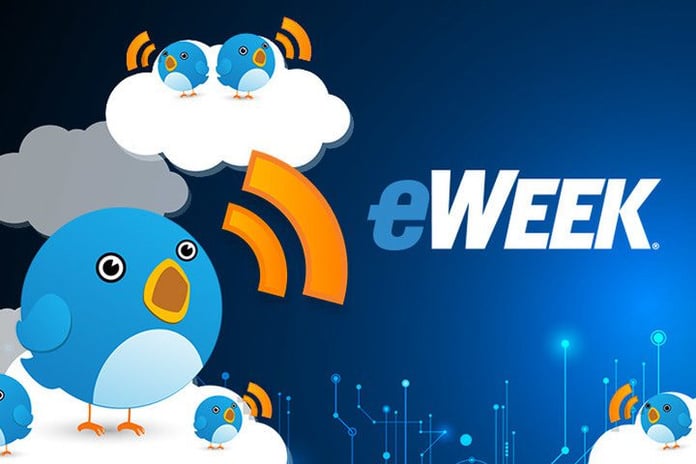On Tuesday, Oct. 13, at 11 a.m. PDT/2 p.m. EDT/7 p.m. GMT, @eWEEKNews will host its 91st monthly #eWEEKChat. The topic will be “Innovation at Legacy IT Companies,” and it will be moderated by eWEEK Editor Chris Preimesberger.
Some quick facts:
Topic: “Innovation at Legacy IT Companies”
Date/time: Tuesday, Oct. 13, 11 a.m. PDT / 2 p.m. EDT / 7 p.m. GMT.
Participation: You can use #eWEEKchat to follow/participate via Twitter itself, but it’s easier and more efficient to use the real-time chat room link at CrowdChat. Instructions are on that page; log in at the top right, use your Twitter handle to register, and the chat begins promptly at 11 a.m. PT. The page will come alive at that time with the real-time discussion. You can join in or simply watch the discussion as it is created. Special thanks to John Furrier of SiliconAngle.com for developing the CrowdChat app.
Our in-chat experts this month are Karen Hardy, VP of Product Management, CX and Contact Center at Avaya; Ingo Fuchs, Chief Technologist, Cloud and DevOps, at NetApp; David Torgerson, Director of DevOps, Lucid; Ian Ferguson, Platform architectures, Lynx Software Technology.
Chat room real-time link: Usehttps://www.crowdchat.net/eweekchat. Sign in with your Twitter handle and use #eWEEKchat for the identifier.
Innovation: What exactly are the trends?
What does it say about Apple when it comes to new products produced? Not since 2011, the year Steve Jobs died, did the company come out with a new product, the Apple Watch. The company that revolutionized the PC industry with the iMac, the Macintosh, the MacBook, the iPod, the iPhone and the iPad has been busy improving most of those products, which is to be expected. The company’s also moved into television and other established businesses, but as for innovating new products, there are none to speak of in the last 10 years.
Intel has been spinning its wheels in developing new processors to handle the avalanche of data pouring into our storage arrays and personal computers. NVIDIA, a younger company with a different take on processors, has now become the leader in that important sector.
Companies that were once pace-setters have fallen by the wayside over the years because they did not continue to innovate. Sun Microsystems, Silicon Graphics, DEC and a long list of others make up this roster.
The fact is, most of the IT innovation right now is coming from cloud-service providers such as AWS, Microsoft Azure, Zoom, Facebook, Google, Slack, TigerGraph, C3.ai, Atlassian and others. Innovation is also coming from IT-related companies in specific sectors, such as Tesla, Oracle, Accenture, Dell EMC and from a whole new crop of startups.
How do the successful companies do it? Tech titans know that it takes an innovative, agile work environment and culture to turn their ambitious visions into reality. They use technology to answer big questions and adapt quickly. They build teams that can out-think and outwork entire industries, and they solve problems in ways no one else has conceived, making all of our lives better in the process.
Remote workplaces forcing innovation
More and more enterprises are moving toward remote infrastructure–especially during the current global pandemic–indicating that a cloud-powered future is taking root and becoming standard. Managing cloud adoption is one of the enterprise’s top priorities for 2020 and for the next few years. A boom of new cloud services is, therefore, imminent. Most of these new apps will include some sort of automation and/or artificial intelligence as a component. Here is where the new innovation will happen.
How can companies determine the right balance between the need for speed and the necessity to stay up-to-date in cloud technologies, when business context changes every day? The answer lies in building agility and assurance across cloud operations from Day 1 and not as an afterthought. Tools for this purpose are needed everywhere in IT, and successfully innovative companies will find a way to provide them.
When established players, such as Amazon Web Services (AWS), launch innovative services, organizations need to ensure that their chosen MSPs have the expertise and resources to on board new services cost-effectively. Thus everybody needs to be on the lookout for innovation at all times, because we don’t know which new product will be the right one that will save us time and money in getting our jobs done effectively on a daily basis.
Seed questions
Here are examples of seed questions we’ll pose to our audience on Oct. 13:
- Identify some companies–older or younger–that you see innovating new products and services.
- Name some companies that you wish would show innovation in their sectors.
- Name an innovative product you use on a regular basis that didn’t exist five years ago.
- How is your own company innovating in its sector? Offer some specific examples.
- Is Oracle on to something with its new virtual private cloud environment? This means that Oracle will manage all of its cloud services–including its foundational Autonomous Exadata Database–behind a company’s private firewall, as if it were a conventional on-premises system.
- Who are some of the young startup “stars” in the cloud-service sector and what innovation do they bring to the table?
Join us Oct. 13 at 11 a.m. Pacific/2 p.m. Eastern/7 p.m. GMT for an hour. Chances are good that you’ll learn something valuable.
#eWEEKchat Tentative Schedule for 2020*
xJan. 8: Trends in New-Gen Data Security
xFeb. 12: Batch Goes Out the Window: The Dawn of Data Orchestration
xMarch 11: New Trends and Products in New-Gen Health-Care IT
xApril 8: Trends in Collaboration Tools
xMay 12: Trends in New-Gen Mobile Apps, Devices
xJune 9: Data Storage, Protection in a Hypersensitive Era
xJuly 14: Next-Gen Networking
xAug. 11: Next-Gen Cloud Services and Delivery
xSept. 8: Confidential Computing and Next-Gen Security
Oct. 13: Innovation at Legacy IT Companies
Nov. 10: Hot New Tech for 2021
Dec. 8: Predictions and Wild Guesses for IT in 2021
*all topics subjects to change
x=completed
